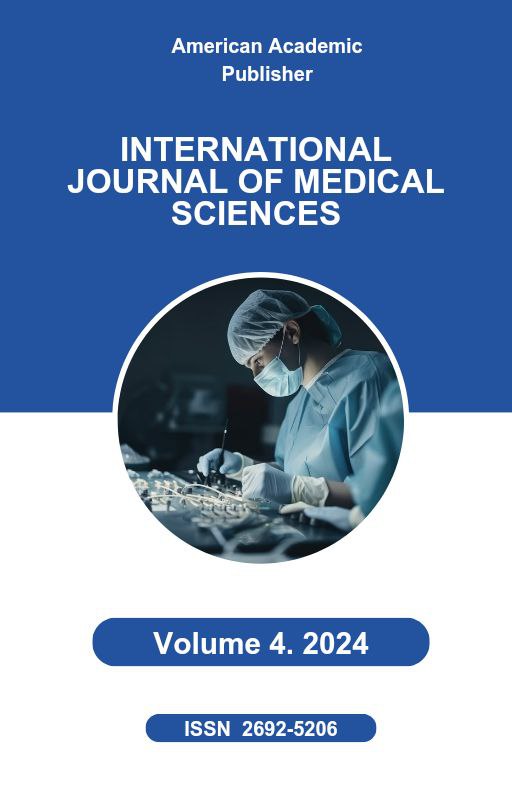 Articles
| Open Access |
https://doi.org/10.55640/
Articles
| Open Access |
https://doi.org/10.55640/
THE INFLUENCE OF ENVIRONMENTAL FACTORS OF THE ARAL SEA REGION ON THE DEVELOPMENT OF DENTOALVEOLAR ANOMALIES IN CHILDREN
Shamshetdinova Yulduzkhan Polatovna , Department of Dentistry, Karakalpakstan Medical InstituteAbstract
The ecological crisis of the Aral Sea has led to a complex of adverse environmental factors, including water and soil salinization, contamination with pesticides and heavy metals, and frequent dust and salt storms. This study aims to investigate the influence of these specific environmental factors on the prevalence and structure of dentoalveolar anomalies (DAA) in children residing in the Aral Sea region. A comparative cross-sectional study was conducted involving 450 children aged 7 to 14 years from the Karakalpakstan region (main group) and 450 children from a conventionally clean area in the Tashkent region (control group). Clinical dental examinations were performed to assess the state of the dentoalveolar system using the Angle classification and other metric measurements. A questionnaire was used to collect data on residential history, dietary habits, source of drinking water, and prevalence of respiratory diseases. The results revealed a significantly higher prevalence of DAA in the main group (88.2%) compared to the control group (46.5%) (p < 0.001). The structure of anomalies in the Aral Sea region was dominated by sagittal anomalies (Class II and III malocclusion), vertical anomalies (deep bite and open bite), and dental crowding. A strong correlation was found between the presence of DAA and factors such as high water salinity, chronic exposure to dust storms, and a diet deficient in essential micronutrients. In conclusion, the complex environmental degradation in the Aral Sea region acts as a significant risk factor, contributing to the high prevalence and specific patterns of dentoalveolar anomalies in the pediatric population. These findings underscore the need for targeted public health interventions, including early dental screening, nutritional support programs, and measures to improve water quality in the affected region.
Keywords
Aral Sea region, environmental factors, dentoalveolar anomalies, malocclusion, children, ecological disaster, heavy metals, water quality, public health.
References
Angle, E. H. (1899). Classification of malocclusion. The Dental Cosmos, 41(3), 248–264.
Crighton, E. J., Elliott, S. J., van der Meer, J., & Small, I. (2011). The Aral Sea disaster and self-rated health. Health & Place, 17(2), 670–676. https://doi.org/10.1016/j.healthplace.2011.01.011
Graber, T. M., Vanarsdall, R. L., & Vig, K. W. L. (Eds.). (2016). Orthodontics: Current principles and techniques (6th ed.). Elsevier.
Landrigan, P. J., Fuller, R., Acosta, N. J., & et al. (2017). The Lancet Commission on pollution and health. The Lancet, 391(10119), 462–512. https://www.google.com/search?q=https://doi.org/10.1016/S0140-6736(17)32345-0
Linder-Aronson, S. (1979). Naso-respiratory function and craniofacial growth. In J. A. McNamara Jr. (Ed.), Naso-respiratory function and craniofacial growth (pp. 121-147). Center for Human Growth and Development, The University of Michigan.
Little, R. M. (1975). The irregularity index: A quantitative score of mandibular anterior alignment. American Journal of Orthodontics, 68(5), 554–563. https://doi.org/10.1016/0002-9416(75)90086-x
Micklin, P. P. (2016). The future of the Aral Sea. Environmental Earth Sciences, 75(9), 844. https://www.google.com/search?q=https://doi.org/10.1007/s12665-016-5595-5
Moyers, R. E. (1988). Handbook of orthodontics (4th ed.). Year Book Medical Publishers.
O'Brien, K., Wright, J., Conboy, F., & Sanjie, Y. (2003). The effect of orthodontic treatment on self-esteem. American Journal of Orthodontics and Dentofacial Orthopedics, 124(5), 554-560.
Proffit, W. R., Fields, H. W., & Sarver, D. M. (2018). Contemporary orthodontics (6th ed.). Elsevier.
Rylander, R., & Vesterlund, J. (1982). Airborne bacteria in an animal house with climate control. Journal of Agricultural Engineering Research, 27(4), 355-359.
Small, I., van der Meer, J., & Upshur, R. E. (2001). Acting on the upstream social and economic determinants of health: A Canadian perspective. The Milbank Quarterly, 79(3), 311–315.
Warren, J. J., & Bishara, S. E. (2002). Duration of nutritive and nonnutritive sucking behaviors and their effects on the dental arches in the primary dentition. American Journal of Orthodontics and Dentofacial Orthopedics, 121(4), 347-356.
Whiteman, C. J., & Fowle, T. L. (2007). The impact of childhood asthma on oral health-related quality of life. Journal of Clinical Pediatric Dentistry, 31(4), 232-237.
World Health Organization. (2018). The public health impact of chemicals: knowns and unknowns. WHO Press.
Zholdasova, R. S., & Bekturganov, Z. S. (2019). Ecological problems of the Aral Sea region and their influence on the health of the population. Bulletin of the Karaganda University, 94(2), 56-62.
Article Statistics
Downloads
Copyright License

This work is licensed under a Creative Commons Attribution 4.0 International License.

